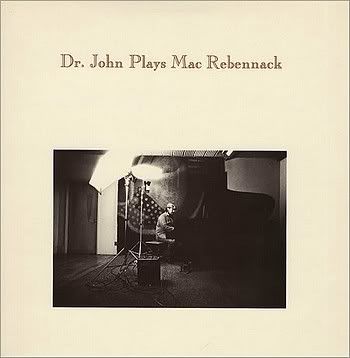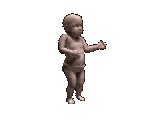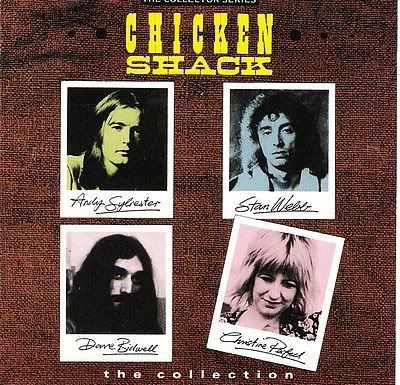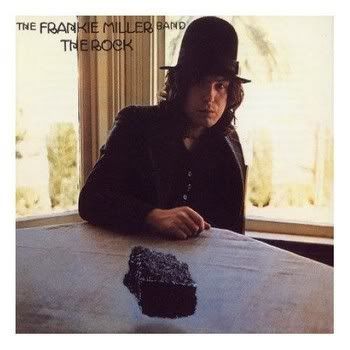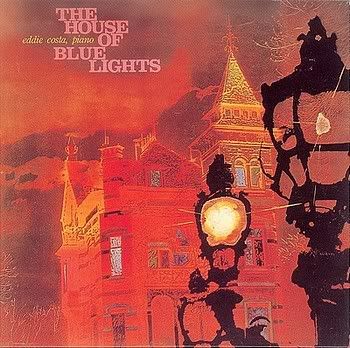
Gentle Giant - Out Of The Woods:The BBC Sessions - 1996 - Varese
Though never as commercially successful as some of their peers (like Yes and King Crimson), Gentle Giant was one of the greatest and most influential progressive rock bands of the 1970s. Their style was marked by a heavy classical influence and unique use of vocal counterpoint. Their early albums are among the most sophisticated and complex works in the genre. Their music is an acquired taste. The band had a hardcore following but their complex educated music did not lend itself to commercialism. Their unique musical style covered rock, blues, jazz, & even Renaissance madrigals.! An incredible live band, they would play guitar quintets, percussion quintets, recorder quartets, a cello/violin/bass/drums combo, and acoustic guitar duels. This album covers some of their work from 1970 - 1975, and is worth listening to. This is a 128 kbps, so please make allowances for sound quality. If you are aware of a higher bitrate issue of this album, please post info, Check out their albums, Acquiring the Taste, & Octopus
TRACKS
1.City Hermit (first time on record!) (4:58) [21 July 1970]
2.Isn't It Quiet And Cold? (4:36) [21 July 1970]
3.Knots (2:14) Excerpt from Octopus [4 December 1973]
4.The Boys In The Band (2:59) Excerpt from Octopus [4 December 1973]
5.Organ Bridge (1:55) Excerpt from Octopus [4 December 1973]
6.The Advent Of Panurge (5:42) Excerpt from Octopus [4 December 1973]
7.Way Of Life (5:58) [4 December 1973]
8.Proclamation (6:03) [12 December 1974]
9.Experience (5:40) [12 December 1974]
10.Aspirations (5:01) [12 December 1974]
11.Cogs in Cogs (2:58) [12 December 1974]
12.Just The Same (6:09) [16 September 1975]
13.Free Hand (6:20) [16 September 1975]
14.On Reflection (5:56) [16 September 1975]
KEY PERSONNEL
Derek Shulman
Gary Green
Kerry Minnear
Ray Shulman
John Weathers
BAND MEMBERS
vocals, sax, recorder, keyboards, bass, drums, percussion Derek Shulman
(b. 11 Feb 1947, Glasgow, Scotland)
vocals, sax, trumpet, clarinet, recorder, percussion Phil Shulman
(b. 27 Aug 1937, Glasgow, Scotland), left early 1973
bass, trumpet, violin, vocals, viola, drums, percussion, recorder, guitar Ray Shulman
(b. 8 Dec 1949, Portsmouth, England)
guitar, mandolin, vocals, recorder, bass, drums, xylophone Gary Green
(b. 20 Nov 1950, Stroud Green, England)
keyboards, vocals, cello, vibes, xylophone, recorder, guitar, bass, drums Kerry Minnear
(b. 2 Jan 1948, Salisbury, England)
drums, percussion Martin Smith
(b. 17 Dec 1946, Southampton, England, d. 2 Mar 1997, Southampton), left Autumn 1971
drums, percussion Malcolm Mortimore
(b. 16 June, 1953), Autumn 1971-Spring 1972
drums, percussion, vibes, xylophone, vocals, guitar John Weathers
(b. 7 Feb 1947, Carmarthen, Wales), joined Spring 1972
Note that the members of the group were multi-instrumentalists who also switched instruments and sang five-part harmony on stage.
REVIEW
First, the short review. Every Gentle Giant fan should buy this album. Now, the longer review. :-)
Culled from the vaults of the BBC, Out Of The Woods (OOTW) is both a historical document and a damn good album. Not only does it contain a previously unreleased track, City Hermit, but also for the first time, we have legitimate live recordings of Isn't It Quiet And Cold?, Aspirations, Way Of Life, and Cogs in Cogs. The performances of all pieces range from very good to excellent. The sound quality is quite intimate, like listening to a private Gentle Giant concert in your own parlor or living room. The clarity is excellent. This is no scratchy, screechy bootleg.
OOTW begins with the unreleased City Hermit, written around 1970-71. It's a rocker that would have fit comfortably on their first album but lacks the sophistication that emerged in their second. Gentle Giant's blues roots are evident here, and though the lyrics are a bit silly, the piece works. I can't say it's one of my favorites, but fans will undoubtedly enjoy hearing this long-lost piece.
For me, the highlights of OOTW are Way of Life and Excerpts From Octopus. The performance of Way of Life is full of energy and excitement, showcasing a band in its prime. Excerpts From Octopus begins with a keyboard-heavy version of Knots, and segues into a wonderful acoustic guitar duet that's completely different from the version on Playing The Fool, featuring reworked parts from Boys in the Band, Experience, and even Edge of Twilight. It's outstanding. This is followed by Gentle Giant's patented recorder ensemble, complete with "Yankee Doodle." The final section, The Advent of Panurge, contains some excellent but subtle twists; Kerry hits a beautifully dissonant note at the end of "Look at my friend..." that made me jump and sigh.
The final three tracks, Just the Same, Free Hand, and On Reflection, are the least interesting on the album, but only because they are scarcely distinguishable from the originals. If you've heard Free Hand and Playing The Fool, there's little new here, and Derek's voice is distractingly overprocessed (electronically). One can also hear overdubbed sax parts which detract from the "live" feel. Still, it's nice to have studio versions of the arrangements that Gentle Giant used in concert.
Overall, OOTW is a vital album that belongs in every fan's collection.
Dan's ratings (out of 5 points):
Recording quality: 5
Performance: 4.5
Historical value: 5
Overall: 5
© Dan Barrett, 17 February 1997 www.blazemonger.com/GG/albums/reviews/ootw-barrett.html
LINER NOTES
In the 60s and 70s, the BBC regularly broadcast rock acts in program series such as Sounds of the Seventies, which were hosted by various well-known DJs. The acts often had to record their pieces in the BBC's own studios. This was due to an agreement with the Musicians' Union, which demanded that a certain amount of the music aired by the BBC should be live music. The BBC sessions were thus regarded as 'live in the studio' recordings; there was, however, no audience in the studio. The act contributed about twenty minutes of material, which was recorded and mixed during one evening, usually over a period of 10-12 hours. The result would be fairly good, although it would be unfair to compare it with the work recorded for an album.
According to Phil Shulman, Simon Dupree and the Big Sound did lots of BBC sessions in the latter half of the 60s. When Gentle Giant was formed by the core of that group, the three Shulman brothers, their management felt it was very important that the new group was presented on the air. As Simon Dupree was well known to the BBC, session contracts were easy to obtain for the newly-formed group. Gentle Giant had started gigging in the Spring of 1970, and by July they had already recorded their first session for the BBC, which was to be broadcast one month later.
The group recorded ten more sessions, up until 1975, all of about 20 minutes duration. However, no further sessions were to follow. This was because the Chrysalis management at this time didn't regard the work at the BBC as being especially important for Gentle Giant, combined with the fact that after 1976 the group had more or less given up on England, to concentrate on markets in the rest of Europe and North America instead.
This CD presents the first two (of three) tracks from the first session Gentle Giant recorded for the BBC. Additionally, the eight, tenth and eleventh (and last) session are included in their entirety.
Unfortunately, the contents of this CD is all that the BBC has been able to retrieve of Gentle Giant's work. The BBC habitually re-used old session tapes up to 1980, and, anyway, the agreement with the Musicians' Union only allowed them to be kept for six months. That we have been able to rescue a full CD's worth of material more than twenty years after the fact, is rather incredible. There may be people out there who have kept tapes from other sessions, whether from the production or from the broadcast itself; if so, Windsong would like to release these sessions also, if the quality is not too far below standard.
As it is, there are still two tracks recorded at the BBC that haven't made it to an album; Freedom's Child, recorded on the first session with the first two tracks on this album, and Hometown Special from the second session. Freedom's Child was also recorded as an unreleased single for Philips in the middle of 1970 and this tape may still exist, whilst Hometown Special survives on a tape recorded from one of the group's first gigs.
All of the 22 other tracks not rescued have been released on albums, and it would seem that they did not differ as much from the album versions as some of the versions included on this CD do. Some tracks were even recorded for more than one session, and the version of The Advent Of Panurge on this CD is, surprisingly, the fourth one recorded for the BBC.
The real gem on this CD is the track City Hermit, which has previously only been known to a few most ardent collectors in nth-generation tapes from early live shows. According to Kerry Minnear, the track wasn't included on the first album because it didn't fit in very well with what the group wanted to do. It was probably deemed a leftover from the late 60s, its structure is loose, and it doesn't contain the fine polyphonic vocals which were to be one of the group's trademarks. However, it portrays the group making a very early and energetic attempt to fuse organ fireworks with multipart harmony and bass riffs. And most importantly, it still rocks today.
The Excerpts from Octopus medley is rather interesting, as it differs in many ways from the same medley on the Playing The Fool live album. The guitar duet was jointly arranged by Ray Shulman and Gary Green, and the early version here was later expanded. The Organ Bridge is certainly different, and the recorder quartet within The Advent Of Panurge contains here their very popular arrangement of Yankee Doodle, which was not included on Playing The Fool.
The other songs also contain bits and pieces which make them slightly different from the album versions, the most notable difference being On Reflection, where the whole tune is rearranged with a different instrumentation and new sections.
All in all, the CD conveys the good fun and enjoyment which the group brought into their music, and shows that even though they had good reason to be content with their compositions, they continued to improve them for the purpose of live performance.
Together with Playing The Fool and the recently released BBC In Concert, this CD gives an excellent view of the live side of the band that delivered outstanding music whether on album or on stage. © Geir Hasnes
A SHORT HISTORY OF GENTLE GIANT
The three Shulman brothers had previously formed Simon Dupree And The Big Sound with three others in 1966. They cut 9 singles 1966-69 (and one as The Moles in 1968) and one album in 1967, all for Parlophone. The act played r’n’b and soul and ventured into psychedelia and pop.
After disbanding late 1969, the three brothers formed Gentle Giant Feb 1970, bringing drummer Martin Smith, who had joined Simon Dupree early 1969, with them. Kerry Minnear, who had graduated from the Academy of Music in 1969 with a degree in composition, joined them on keyboards and vocals, and guitarist Gary Green was brought in to complete the lineup in March.
The group were then signed to progressive label Vertigo. Their first album displayed their thorough arrangements, utilizing counterpoint and polyphony like no other groups within rock had ever done and would ever do until this day. Their multipart singing and use of classical instruments were in line with the current scene, only that they brought these aspects much farther.
The group toured extensively mostly in the UK and built a cult following. Their next album, Acquiring the Taste (1971), expanded their frontiers further, dipping into jazz, folk and complicated harmonies and chord progressions, but the satiric cover art and their vow inside to run the risk of being unpopular with their musical experimentation failed its target and gave them a somewhat pretentious image, which they never managed to get rid of. Nevertheless, the album impressed Ian Anderson of Jethro Tull, who asked the group to support them on their European tour in early 1972.
Drummer Martin Smith then left to lead a quieter life as drummer in various outfits on the south coast. Young and aspiring Malcolm Mortimore replaced him and the next album, Three Friends, was recorded. This was the group’s first concept album with a rockier edge and longer compositions. As they were to embark on the promotional tour in the Spring of 1972, Mortimore had a motorcycle accident and John Weathers was brought in, to replace him pernamently. After recovering, Mortimore continued to play and record professionally, and still does
Weathers brought a solid foundation to the group’s complexity and they achieved enormous popularity particularly in Germany and Italy. They hastened back to record Octopus, their last album for Vertigo, with the famous Roger Dean cover, for many their ultimate achivement, displaying a versatility and blending the various styles into an ultra-progressive album. They then embarked on their first US tour with Black Sabbath, to promote Three Friends that had been released by Columbia with heavy promotion, but the two acts didn’t fit together. They were saved by Ian Anderson who asked them to support Tull on their US tour and the group finally broke through in the USA, though not on a large scale.
The group then went home to support Groundhogs and promote Octopus which was released late 1972. Sadly, in the USA the record company chose not to use the Dean cover, didn’t release the record until the following year, and then Phil Shulman handed in his resignation. He was 10 years older than the rest of the band and although the band’s musical leader, he chose his family above the music business and quit music altogether.
Black Sabbath had formed their own company World Wide Artists (WWA) to re-release their whole catalogue, and Gentle Giant now moved to WWA with a view to doing the same. Their fifth album, In a Glass House from 1973, was and is still awesome and among GG fans regarded as their best album, although the loss of Phil would come to mean toning down the gentler side and the use of the accoustic instruments. In the USA the record company refused to release the album on the ground that it was too eclectic and undigestible, but it then sold 250 000 on import. The group now headlined some of their tours and was particularly well received on the West Coast and in Canada.
The extensive touring continued and the next album, The Power and the Glory, brought their complex rhythmic and atonal experimentation to new heights. This album was released in the USA by Capitol and sold well, but the group was being ripped off by WWA in the UK, who folded shortly thereafter.
In 1975 Gentle Giant headlined most of their concerts and released Free Hand on Chrysalis which made it to top 30 in the UK and the top 50 in the USA, making it their best selling album ever. The album probably represents the height of their sophisticated techniques, the atonality had been toned down and the tremendous interplay was taken to its extreme.
To cash in on the success they rushed the recording of the next album and the end result, Interview, which was released in 1976, failed to some extent although charting in various European countries. It was based upon silly questions made by music journalists, but this backfired as it was too introspective and not as developed as previous albums. Some of the accoustic instruments had been excluded as the group opted for more of a rock image, but the cover art failed to reflect this. The group thus gave up on England after touring in the Summer.
A double live album, Playing the Fool, recorded at their European tour in the Autumn was released in 1977 and showed the group’s rearrangements of studio material for live purposes. It was stunning to know that the band members actually performed their incredibly complex tunes on stage. The album probably represents the group at their peak of popularity, and subsequently they made a decision to play their new material live before recording it.
At this time, many progressive acts had given up or given in to a more commercial style, and the Shulman brothers chose midway in making their next album to go for a simpler, more AOR oriented approach, to follow the musical trend. The Missing Piece, released at the end of 1977, contained their last progressive excursions and their first singles material, which, of course, failed to make the expected impression on the young.
Meanwhile, other progressive rock acts either gave up or gave in and the same happened to Gentle Giant. They quit touring for a while and recorded Giant for a Day, which contained short songs to cash in on the new wave and bring the group new fans while the cover art was deliberately made un-progressive to show the new direction. The record which was released in 1978 and its ill-conceived cover sadly show their lack of understanding basic rock’n’roll and appalled their fans while attracting noone else.
In 1979 the group made a final attempt to obtain commercial success with the hard-rock stadium oriented Civilian. It was released in 1980 accompanied by a US tour, but the approach failed once again and the group disbanded at the end of the tour.
Derek Shulman became A&R man for Atco and has been in the business on the executive side since. Ray Shulman and Gary Green made another attempt together under the band name Shout, but their only single released in 1982 bombed without a trace. Ray Shulman then made television and advertising music, in 1987 started producing and in 1994 started making computer games music. Gary Green only plays for a hobby, after having recorded with Eddie Jobson in 1983. Kerry Minnear played for a church until 1988 when he started composing TV series music and teaching music. John Weathers played with Welsh rockers Man until 1997 when he quit in order to play and record as a freelancer. Many attempts to bring the band together again have not brought fruit, apart from having resulted in re-releases of the whole catalogue on CD and thorough release of previously unreleased material.
The upsurge of interest in progressive rock music in the 90s has seen a renewed interest in the group and they arguably were surpassed by none in utilizing classical composition techniques within a rock framework. Their instrumental skill has made them a favourite musicians’ band and they have influenced a huge number of bands within the progressive rock context in the 90s. © Geir Hasnes, August 2001
